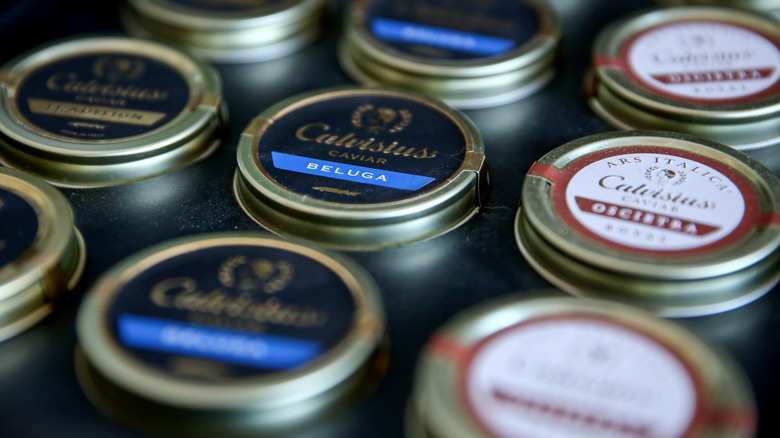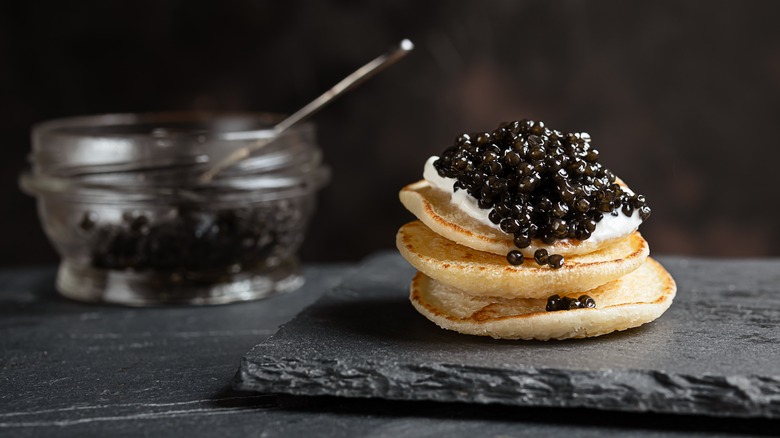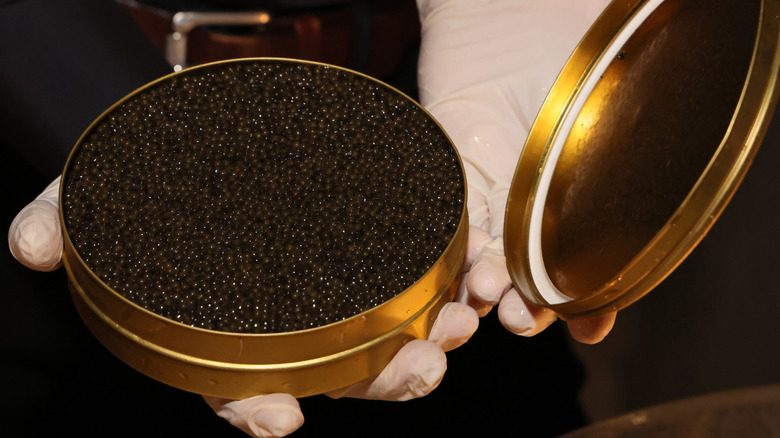Why The World's Most Expensive Caviar Was Once Banned In US
Nothing says luxe like caviar, but this glamorous delicacy has a complicated relationship with the United States market. While these fish eggs farmed from sturgeon have long been a symbol of culinary excess in America, for quite some time, the most famous caviar of all couldn't be purchased anywhere in the country.
In 2004, the United States amended the Endangered Species Act to include the beluga sturgeon as a threatened species (though environmental groups had pushed for it to be classified as endangered), leading to a ban on all imports of beluga sturgeon caviar. Before this, the United States imported four-fifths of the world's caviar from Russia and other Central Asian countries where the caviar business thrives both on the legal and black markets.
The ban was a major blow to caviar lovers Stateside, as well as to the countries where fishing for beluga sturgeon caviar in the Caspian Sea is a massive economic undertaking. Beluga caviar is the most expensive and well-known type of caviar in the world, and the idea that it might have been unavailable anywhere in America for so long still comes as a shock.
Caviar in the US
While the ban on beluga caviar imports to the U.S. might have been seen as an extreme measure, a little knowledge of American history might explain how this came to be. In the late 19th century, America was actually one of the biggest producers of caviar worldwide. Atlantic sturgeon were plentiful in the United States, particularly around the Delaware River, and were fished for their meat — while the eggs that were collected from them were viewed as a casual byproduct of the main endeavor. Caviar was commonly given away for free as a bar snack at the time or even fed to livestock — until European immigrants realized that the Americans were throwing away black gold.
The town of Caviar, New Jersey (which is no longer called that) quickly became the caviar capital of the country, and by some measures, the world. By the 1870s, it was exporting more caviar to Europe than all of Russia. But the sturgeon were overfished within a few decades, and the caviar business in the U.S. disappeared entirely. With that in mind, it's no wonder the U.S. was quick to jump in at the mention of the potential endangerment of these fish.
Caviar's triumphant return
The ban on beluga sturgeon caviar was overturned in 2020, much to the delight of caviar fans all over. This timing partially explains the caviar boom that followed the end of the COVID-19 lockdown era. All of a sudden, TikTok was overwhelmed with caviar influencers like Danielle Matzon explaining why we should be eating caviar on Doritos, and videos of people eating caviar "bumps" off the back of their hands. Restaurants and bars like Temple Bar and Tokyo Record Bar in major cities like NYC started offering specialty caviar add-ons — while the caviar brand Number One Caviar opened a full-on boutique-restaurant on Wall Street, betting on the sudden popularity of what would be an otherwise niche project.
But the staying power of caviar in the U.S. will balance on a few key issues, one of them being sustainability. Several major caviar brands are already promoting their sustainability cred, but where there are high profits, there will always be a struggle to match ethical sourcing to the demands of the market.



